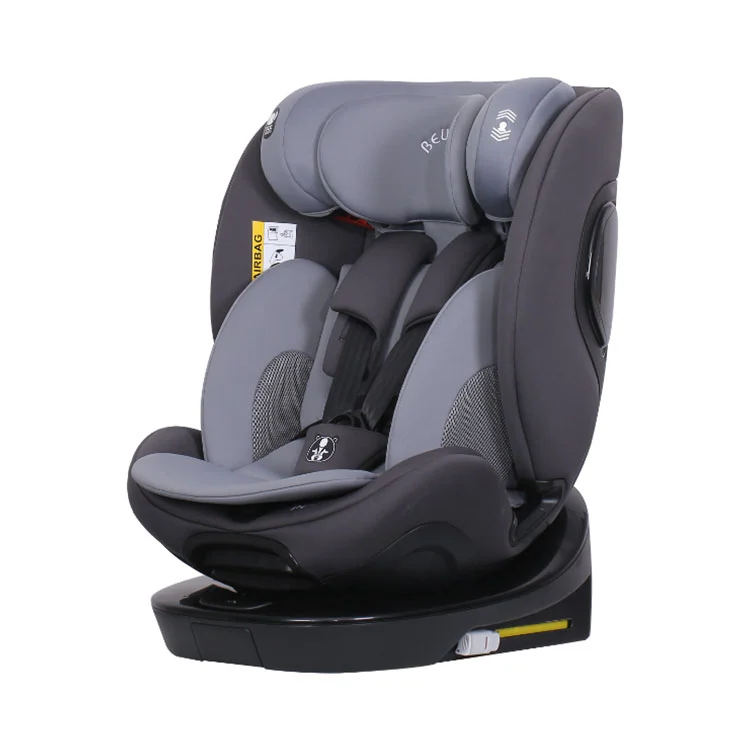What Are the Types of Child Car Seats?
2025-09-15
Choosing the right child car seat is one of the most important decisions parents make for everyday travel safety. Regulations require that children use a car seat suitable for their age, weight, and height. As a long-established supplier, our factory understands the need for products that combine strict safety standards with thoughtful design. In this article we will explore the main types of child car seats, present detailed specifications of our Age Series Baby Car Seats, and answer common questions parents often ask.
Infant Car Seats
Infant car seats are designed for newborns and babies up to about 12 months old depending on individual growth. They are rear-facing to provide optimal head and neck support. These seats are portable and usually include a detachable base for quick installation and removal. Infant models in the Age Series Baby Car Seats line prioritize lightweight construction and cushioned support suitable for the earliest months.
Convertible Car Seats
Convertible seats adapt from rear-facing for infants to forward-facing for older babies and toddlers. They are valued for long-term use because one seat covers multiple growth stages. Our Age Series Baby Car Seats include convertible models that provide extended rear-facing capacity, adjustable harness heights, and multiple recline positions to balance safety and comfort as the child grows.
Booster Car Seats
Booster seats elevate a child so that the vehicle seat belt fits correctly across the chest and lap when forward-facing harnesses are no longer appropriate. Booster use generally begins around age four and continues until the child reaches the vehicle manufacturer recommended height for standard seat belt use. Bewell offers booster designs with belt positioning guides, reinforced frames, and supportive padding for longer trips.
Combination Car Seats
Combination seats begin as forward-facing harnessed seats and later convert into boosters. They are practical for parents who want a single solution that transitions through stages without additional purchases. Our products in this category are manufactured with durable materials, easy installation points, and clear user guides to reduce installation errors and ensure consistent protection.
Detailed Product Specifications
The Age Series Baby Car Seats are engineered with precise attention to quality and safety. Below is a summary of representative specifications for the series.
| Model | Suitable Age Range | Installation Mode | Safety Features | Comfort Features |
| Infant Rear-Facing | 0–12 months | ISOFIX or seat belt | 5-point harness, side impact protection | Removable soft cushions, canopy |
| Convertible 2-in-1 | 0–4 years | ISOFIX or seat belt | Rear and forward modes, adjustable harness heights | Multiple recline positions, washable covers |
| Booster with Backrest | 4–12 years | Seat belt guided | Belt-positioning clips, reinforced frame | Padded armrests, breathable fabric |
| Combination Seat | 9 months–12 years | ISOFIX or seat belt | Harness to booster transition | Height-adjustable headrest |
Our factory has invested heavily in testing facilities and production controls so each Age Series Baby Car Seats model meets or exceeds applicable safety standards. Quality verification and batch level inspections are part of our standard production flow.
FAQ
Q: What are the types of child car seats?
A: There are four primary types: infant car seats, convertible car seats, booster seats, and combination seats; each type corresponds to specific age, weight and height ranges and offers tailored installation and restraint systems to protect children at different development stages.
Q: What are the types of child car seats and when should each be used?
A: Use rear-facing infant seats from birth until the seat's specified limit, keep children rear-facing as long as possible in convertible seats, transition to forward-facing harnesses when weight and height allow, and move to boosters when harness limits are exceeded so the vehicle belt fits correctly; follow manufacturer guidelines and local regulations for exact thresholds.
Why Choose Bewell
Bewell has established a reputation for delivering reliable child restraint solutions backed by decades of manufacturing experience. Our design teams focus on measurable safety improvements and practical features that help caregivers install and use seats correctly. Bewell partners with testing labs and distribution networks to ensure consistent product availability and after sales support.



